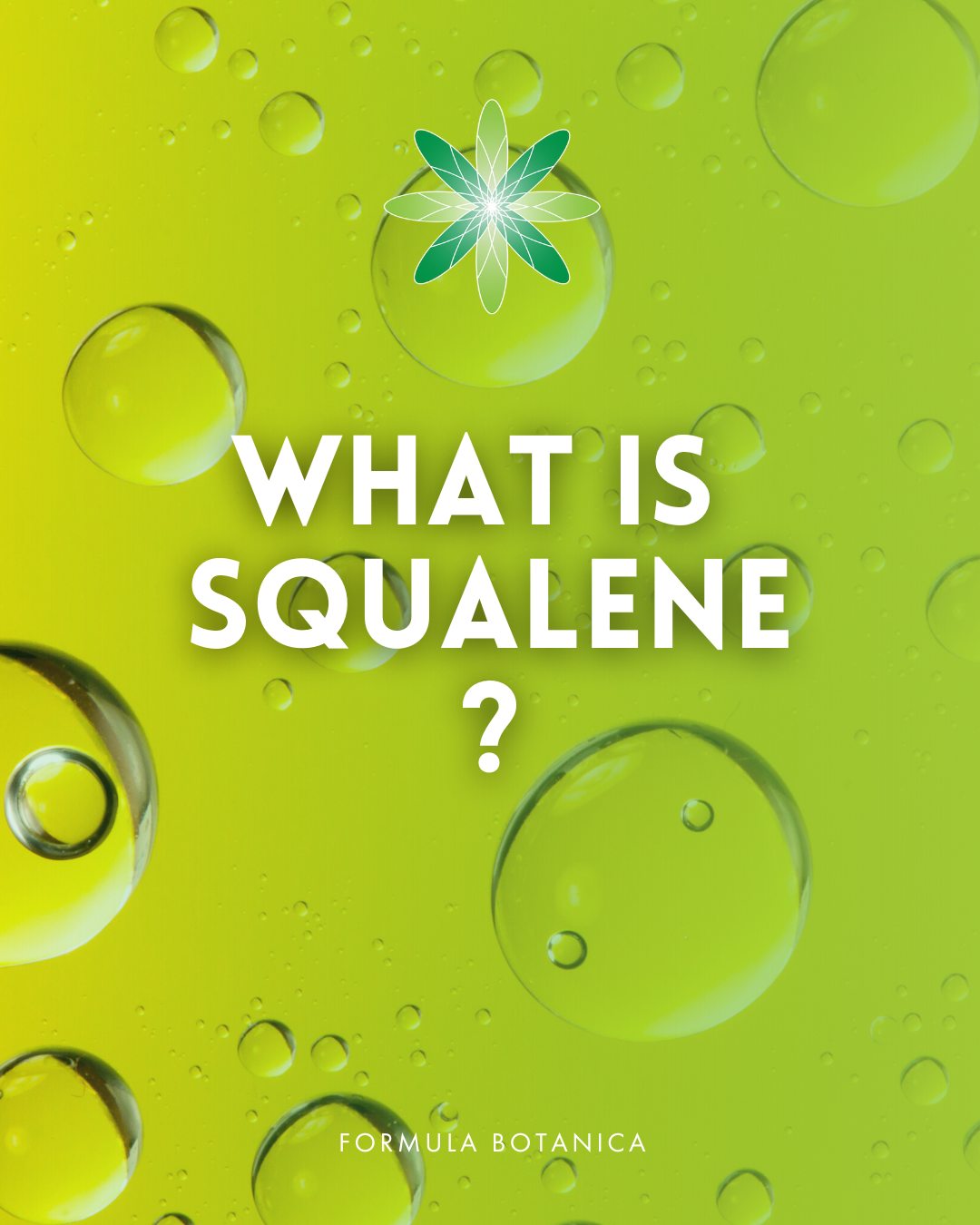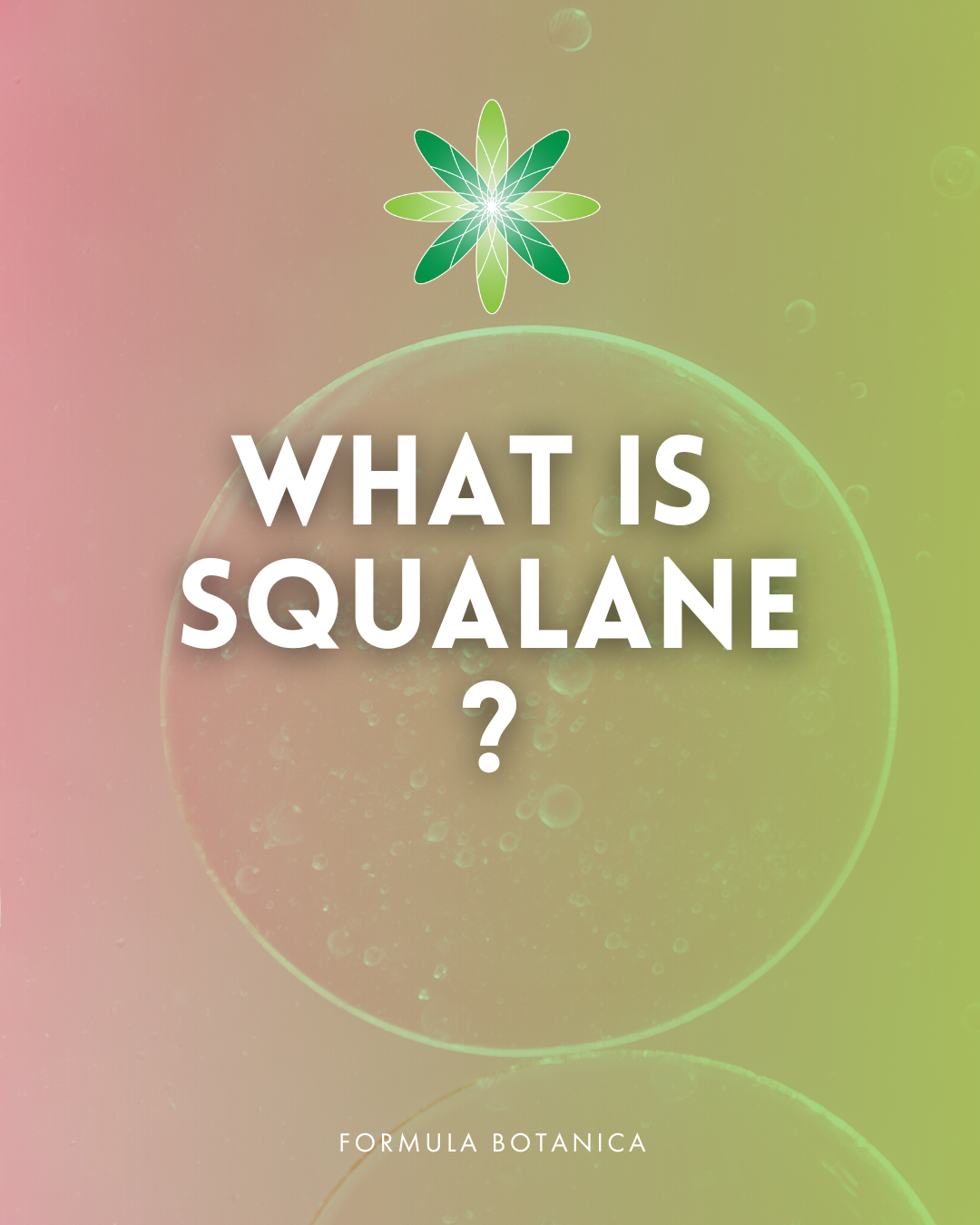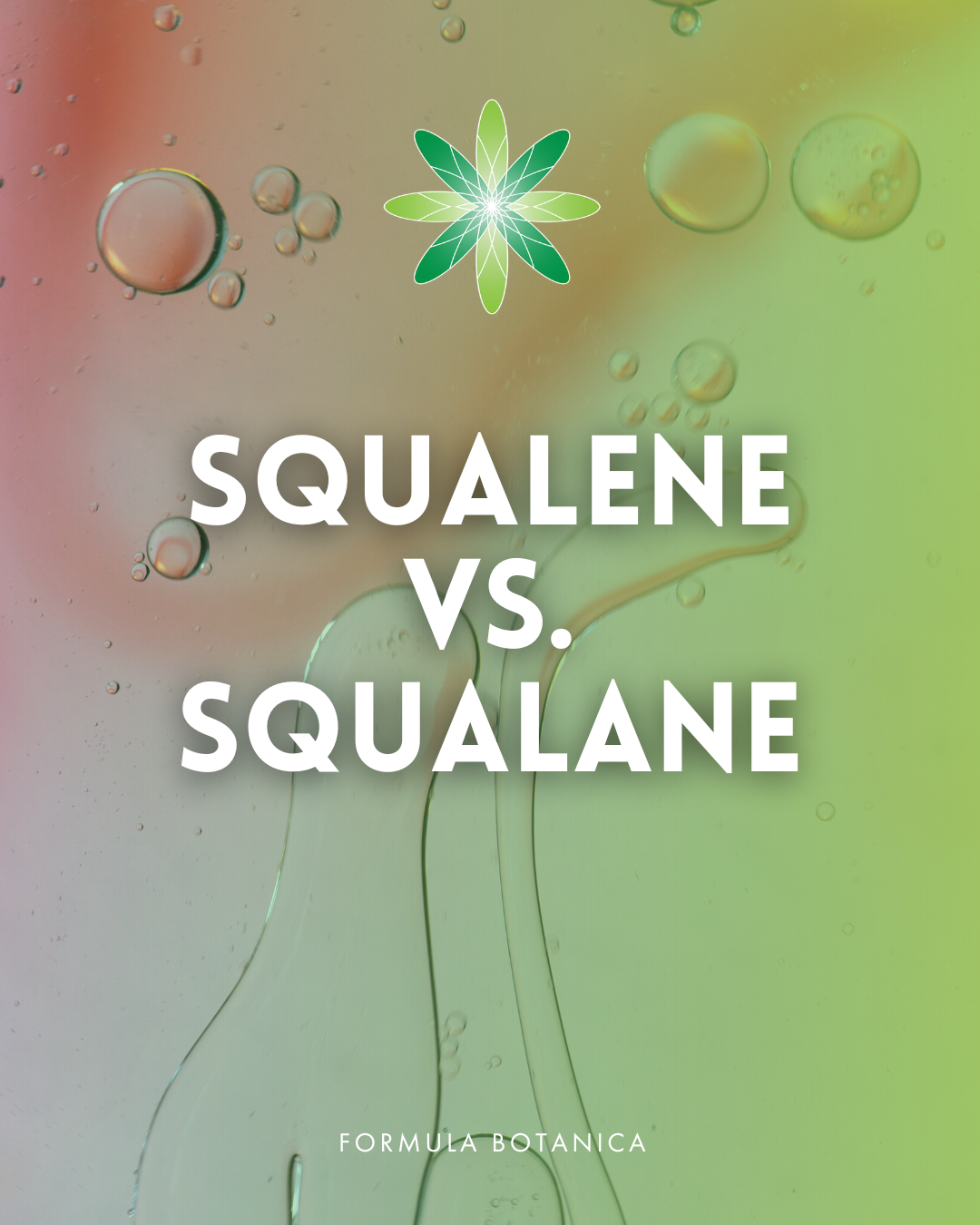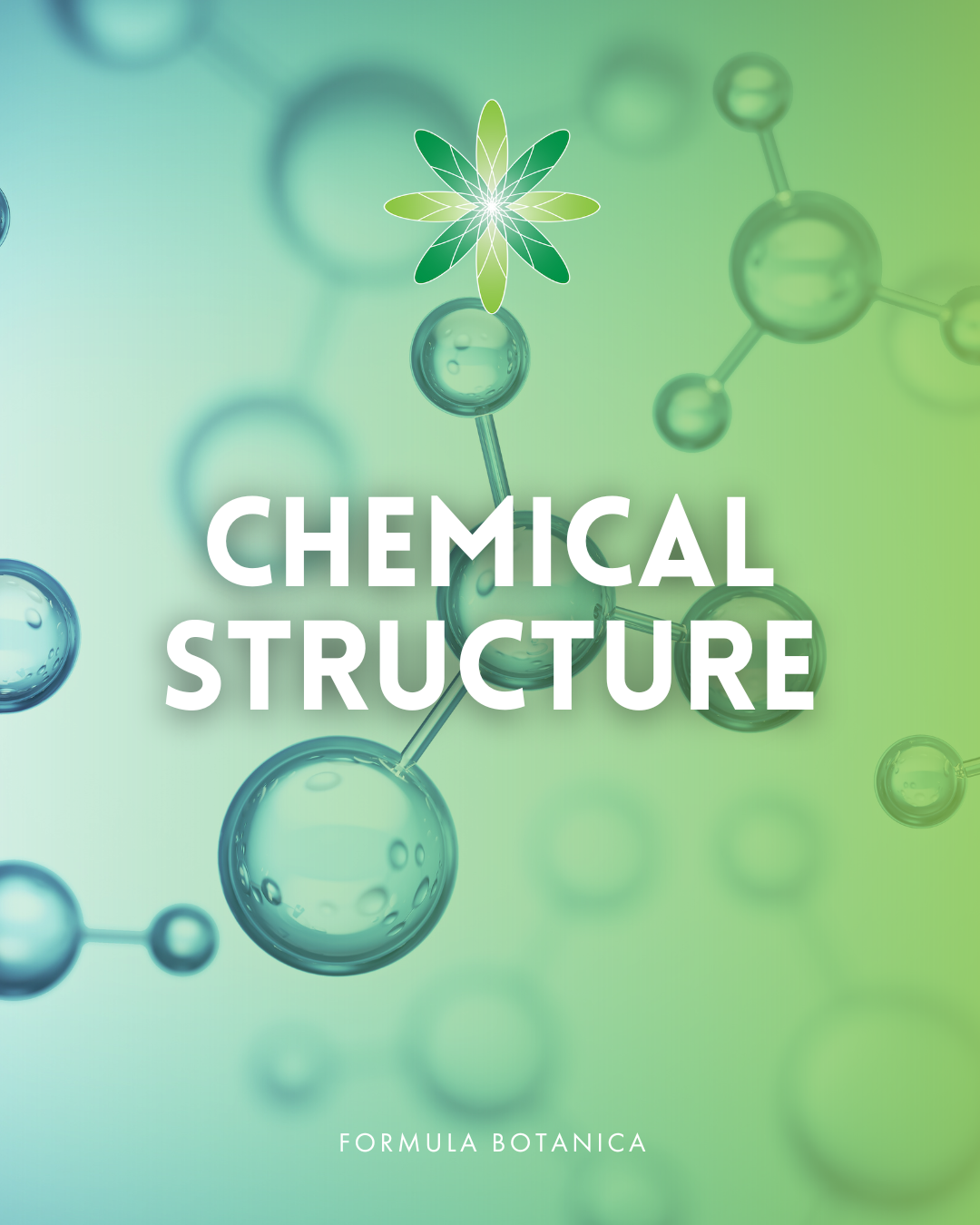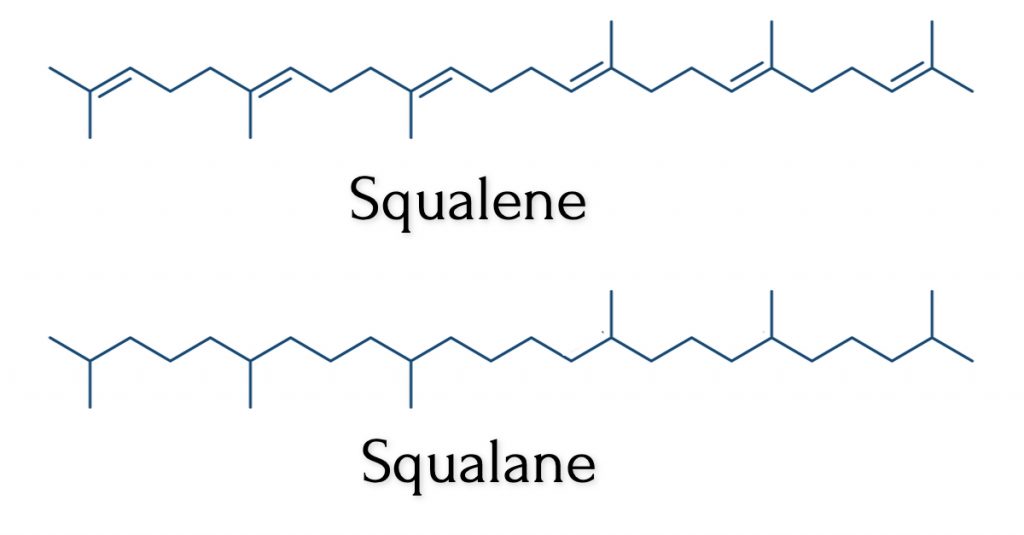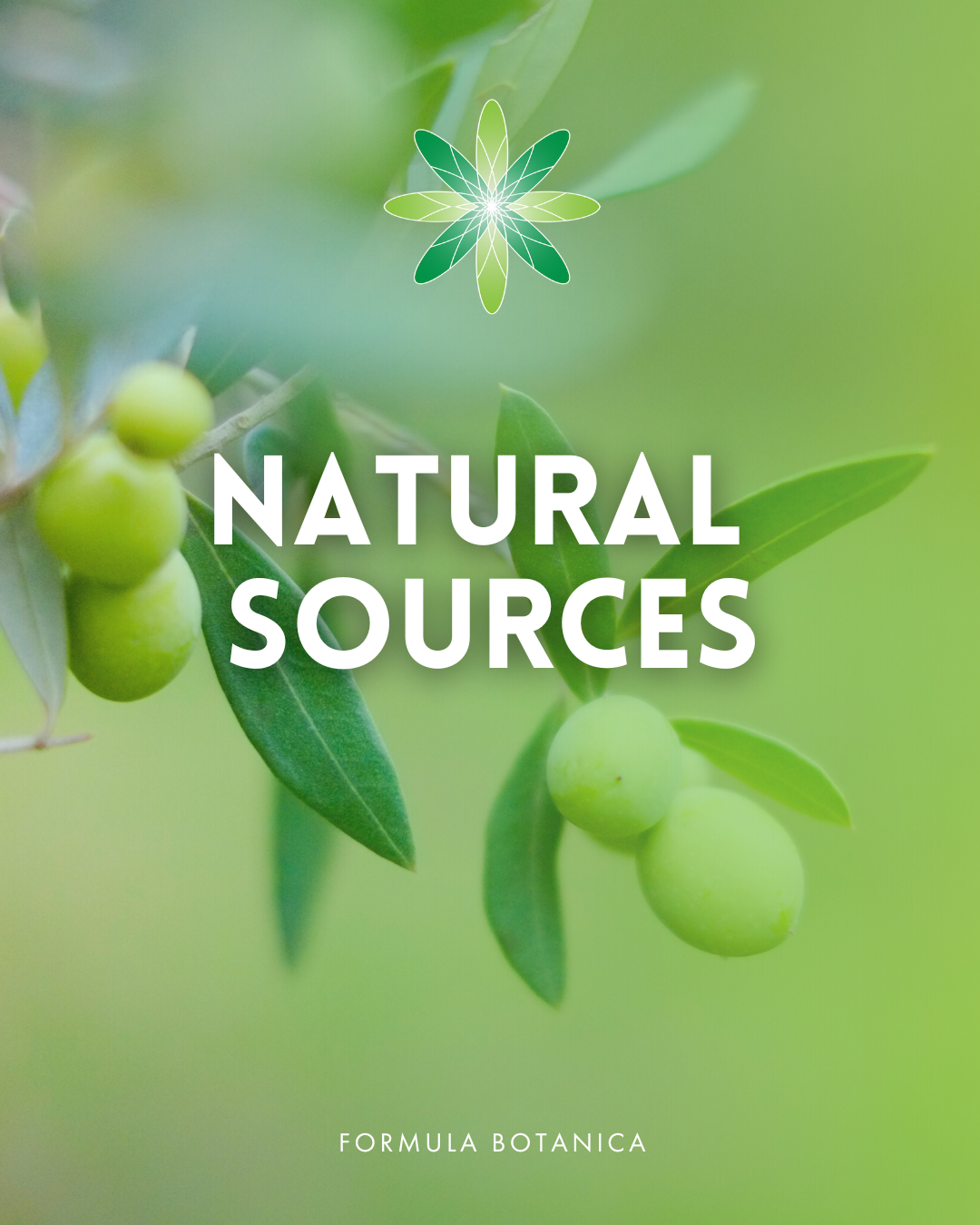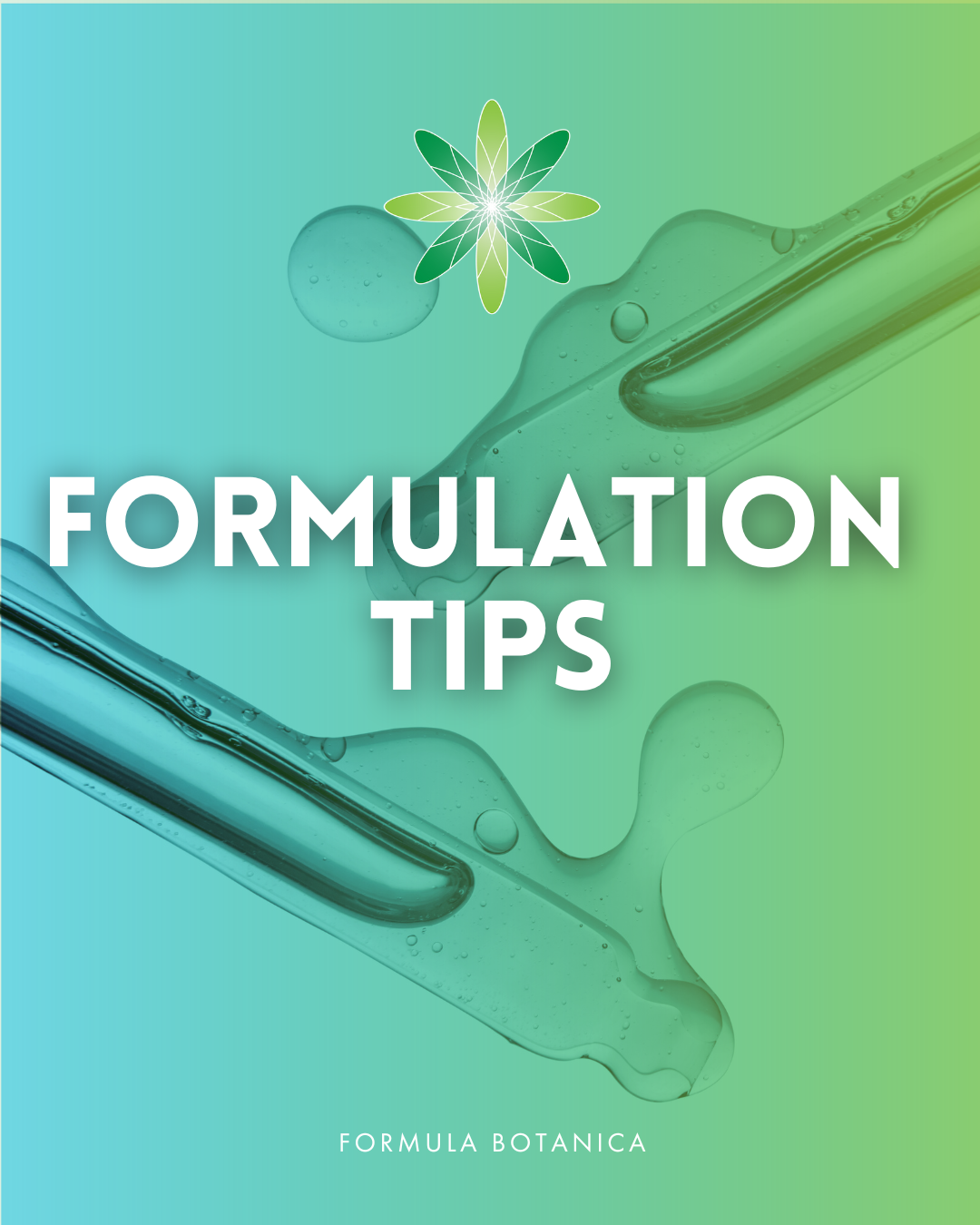Updated: 10.12.24
Have you ever wondered about the difference between squalene and squalane? If so, you’re not alone. Both are shining stars in the natural skincare world, but there’s still a lot of confusion about what sets them apart and why they’re both so valuable.
In this blog post, we’ll unravel the mystery behind squalene and squalane. You’ll discover what each of these ingredients is, how they differ, and why they’re so beneficial for your skin. We’ll break down the science in a way that’s easy to understand and share practical tips on how to incorporate them into your skincare routine.
Plus, as a special bonus, we’ll guide you through creating your own natural squalene and squalane booster, so you can experience their incredible benefits firsthand. Ready to dive in? Let’s explore the fascinating world of squalene and squalane together!
What is squalene?
What is squalane?
Squalene vs. squalane
Squalene is a lipid naturally present in our skin’s sebum and found abundantly in nature. In cosmetics, it is a superb emollient, which can help repair and maintain the skin’s lipid barrier. However, squalene is prone to oxidation, limiting its effectiveness in skincare products.
Squalane, the hydrogenated and more stable version of squalene, retains all the benefits of squalene—such as deep hydration and skin protection—without the risk of oxidation, making it a preferred ingredient in the skincare industry. It is praised for its lightweight feel and moisturising properties.
Chemical structure
Squalene
Squalene is a polyunsaturated lipid that plays a vital role in the biosynthesis of phytosterols in plants and cholesterol in animals and humans. Its primary function in skincare is to help protect the skin from oxidative damage, particularly from UV light and other environmental stressors that generate free radicals. This makes squalene a key player in reducing oxidative stress and maintaining healthy skin.
Squalane
Squalane is the hydrogenated, fully saturated form of squalene. By saturating the six double bonds found in squalene, squalane becomes a stable, non-oxidising compound. Unlike squalene, squalane does not possess antioxidant properties due to its saturated chemical structure. However, it remains a highly effective emollient, offering deep hydration and a non-greasy feel, making it a popular ingredient in skincare formulations.
Functions and properties
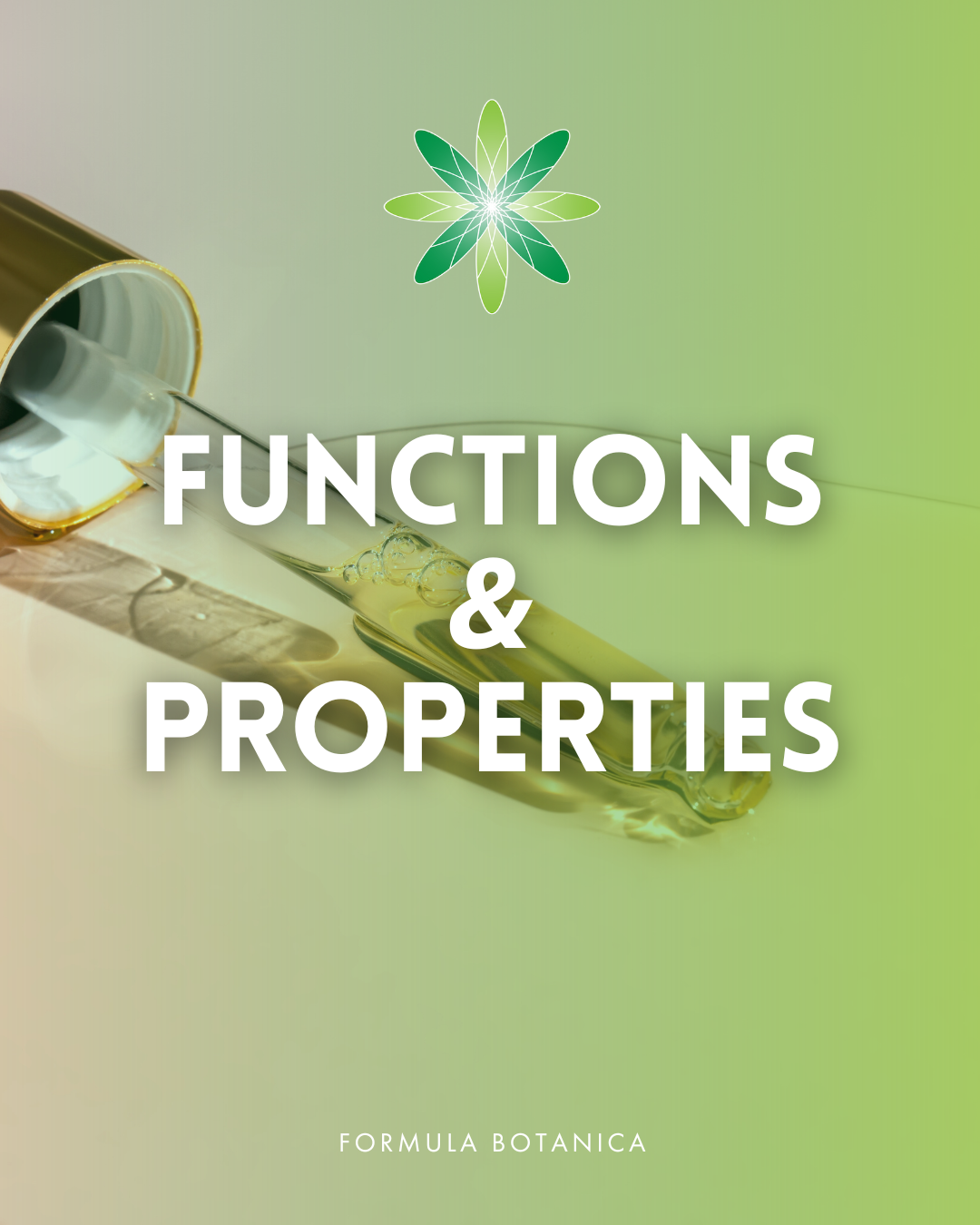
In contrast, squalane, the hydrogenated form of squalene, is stable and resistant to oxidation, meaning it doesn’t act as an antioxidant or form squalene peroxide. Both squalene and squalane are excellent emollients, helping to restore skin suppleness and reduce transepidermal water loss (TEWL). Find out more about the skin barrier and TEWL in this post:
Skin Barrier 101: essential guide for natural cosmetic formulators
Natural sources of squalene & squalane
When squalene was first introduced into cosmetics in the 1950s, it was primarily sourced from animals. However, in recent decades, the focus has shifted towards sustainable and renewable alternatives, leading to a surge in the use of both squalene and squalane, particularly in natural cosmetics.
Ongoing research aims to refine and possibly eliminate the hydrogenation process used to produce squalane, making production more efficient. Most plant-based squalane, or phytosqualane, now comes from olive oil by-products or sugar cane fermentation, with amaranth oil also emerging as a rich source.
However, because producing squalene from shark liver is cheaper, some phytosqualane may be adulterated with animal-derived squalane. To ensure authenticity, purchase only from reputable suppliers. Here’s how to research your ingredients:
The formulator’s guide to INCI
How to formulate with squalene & squalane
Make a natural squalene & squalane booster
As we’ve discussed, squalene is essential for keeping our skin hydrated and supple. However, as we age—typically between 30 and 40—our natural squalene levels begin to decline. That’s why we’ve developed a customisable natural squalene and squalane booster, specifically designed for mature skin.
Ingredients:
- Combined plant oils: 79%
- Squalane: 20%
- Vitamin E: 1%
Method of manufacture:
1. In a beaker, weigh the oils you want to use in your booster.
2. In two separate beakers, weigh the squalane and the vitamin E. Add the squalane and vitamin E to the first beaker, stirring the formula with a glass rod.
3. Decant your booster into a dark glass bottle with a dropper dispenser and apply a few drops to the face daily.
Create your own formula
Use this framework formulation and the information on squalene-rich oils in the table below to create your own formula. You will need to buy squalane from a reputable supplier.
| Oil | Average squalene concentration | Absorption rate |
|---|---|---|
| Rice bran oil | 0.3% | Fast |
| Grape seed oil | 0.01% | Fast |
| Hazelnut oil | 0.03% | Fast-medium |
| Peanut oil | 0.03% | Fast-medium |
| Amaranth oil | 4.2% | Fast-medium |
| Macadamia oil | 0.02% | Fast |
| Sunflower oil | 0.01% | Medium |
| Olive oil | 0.4% | Medium-slow |
| Coconut oil | 0.002% | Medium |
This formula is fully customisable, allowing you to create your own booster using the oils you prefer or have on hand. Here are some suggestions:
Top 10 botanical oils every formulator needs
We also cover oils in our Diploma in Organic Skincare Formulation and in our exclusive membership-only site, the Lab at Formula Botanica. Pre-enrol now to access over 50 mini labs and ingredient profiles.
Bonus: Free squalane formulations
If you’ve enjoyed the formulation below, why not make our own free skincare and haircare squalane formulations? Check out our free formulations using squalane below:
Cleanser:
Facial oil:
Face serums:
How to formulate a bakuchiol beauty concentrate
Face & body creams:
How to make a night cream with peptides
Body polish:
Lip serum:
Hair conditioner:
Hair wax:
Suggested suppliers:
- Formulator Sample Shop (US) – see also their EU site.
- Aromantic – EU, UK & International
- Lotioncrafter – US
We’d love to hear how you get on and get your feedback on the benefits of using squalane in various formulations, so don’t forget to leave us a comment below!
Leave us a comment
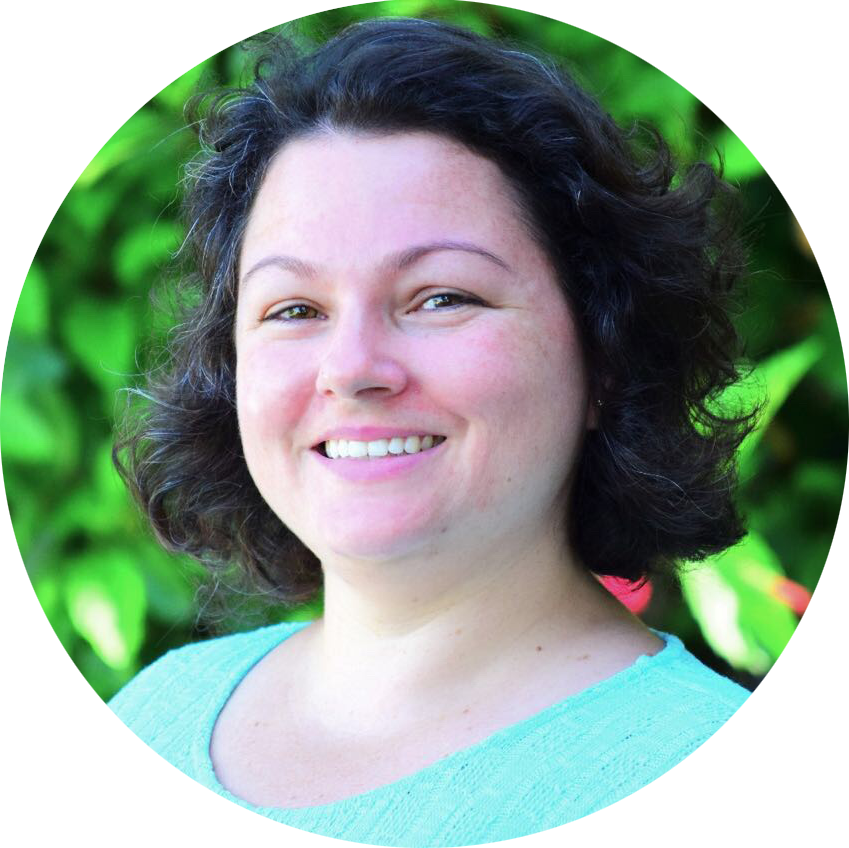
Eliziane is a Pharmacist and Biochemist, manages our Student Experience Team and provides technical advice for the ingredients research we undertake and provide. She loves bringing together the concepts of science, sustainability and organics. Read more about the Formula Botanica team.


